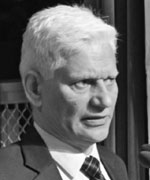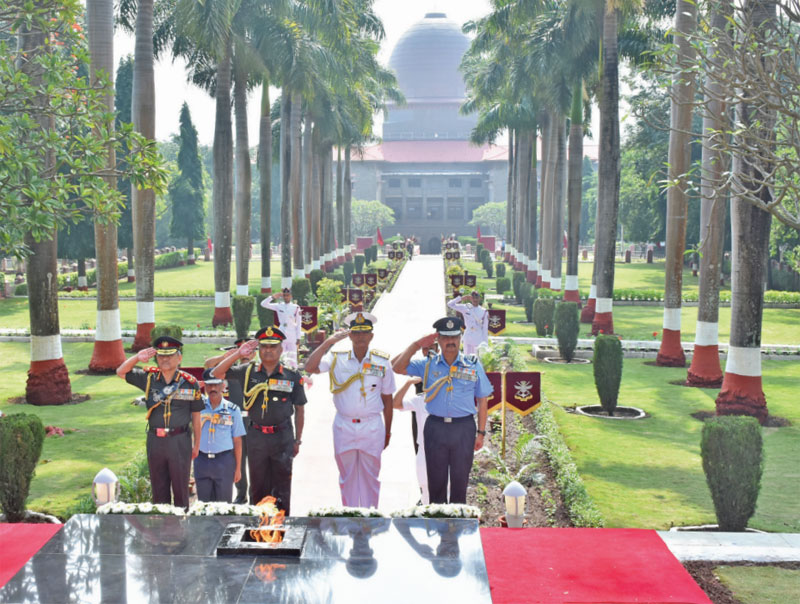The Making of Leaders
 Col Yogander Singh (retd)
Col Yogander Singh (retd)
The year 1991 stands as a watershed in the trajectory of Indian military leadership. During 1947-1990, the Indian Army was headed by a succession of chiefs who had received their education in normal colleges and chose a career in the army as adult graduates. However, post-1990, the apex level army leadership mostly came via Sainik School–National Defence Academy (NDA) route. They were put on a pre-determined career path as young adolescents of around 10-12 years and have since then been leading a regimented life controlled by the uniformed class with all the consequent outcomes that included celebration of physical prowess over cerebral and unquestioning obedience preferred over a questioning mind. Has such a change provided better generals for the army?
My hypothesis is that it does not seem so.
The Indian military, during 1947-1990, played a critical role in protecting India’s fragile postcolonial democracy through the vicissitudes of India’s chaotic politics. Field Marshal K.M. Cariappa as the first Indian chief of the armed forces firmly distanced the army from active politics. This trend was reinforced by General K.S. Thimayya when he offered to resign when faced with an obdurate defence minister. He eventually took back the resignation to uphold the dignity of the office of the Prime Minister when prime minister Jawaharlal Nehru requested him to reconsider.
The instance of prime minister Indira Gandhi asking Field Marshal (then Army Chief) Sam Manekshaw whether he was planning a coup and his response unequivocally defining his role as army chief is well known. The Field Marshal reportedly said, pointing to his nose, “I don’t use it to poke into other’s affairs.” Later, when the prime minister declared Emergency in 1975, the opposition implored the army to dethrone Gandhi, while she asked the army to support the implementation of the emergency. The army did neither.
In a paper titled The Dog That Did Not Bark: The Army and the Emergency in India for Carnegie Endowment Aqil Shah wrote, “The Indian military’s actions were shaped by institutional standards of appropriate behaviour which made the notion of a constitutionally prescribed civilian supremacy inviolable and legitimate”. However, at the same time, General T.N. Raina refused to accede to the then defence minister Bansi Lal’s request for troops and army water carriers for a political rally. He also refused to assist in imposition of emergency. “You are not a part of the emergency and keep away from politics,” he is reported to have remarked. This finely balanced response to competing demands of the opposing political groups was rooted in the legitimate understanding that the army, in the words of General G.G. Bewoor, “Must protect itself against political influences that could shatter its professional cohesion and erode its capacity to defend the state against external aggression or internal conflict.”

But since 1990, the situation seems to have taken a turn for the worse. The most glaring example of the failure of the army leadership was its attempt to hide its quiet acceptance of a tactically suicidal embargo that the Atal Behari Vajpayee government placed on it during the 1999 Kargil crisis. The government instructed the army not to cross the Line of Control (LC), an injunction that led to unnecessary casualties among the assaulting troops. Apparently, the army chief General V.P. Malik told Prime Minister Vajpayee, “Sir, we will follow the mandate but please do not speak about it in public.” This was reported by PTI news agency and published in The Week on 14 July 2019.
Later, the much-touted hasty mobilisation followed by a quiet demobilisation in 2001 under General Sundararajan Padmanabhan is another example of non-calibrated response that was needlessly prolonged. Another low was reached when a section of media reported attempted coup by a chief who was engaged in a court battle to decrease his age
Subscribe To Force
Fuel Fearless Journalism with Your Yearly Subscription
SUBSCRIBE NOW
We don’t tell you how to do your job…
But we put the environment in which you do your job in perspective, so that when you step out you do so with the complete picture.







